Defined as the period 1715-1723, Regency Paris is so-named because it’s when Duke Philippe d’Orléans ruled as Regent for an infant King Louis XV. But Regency Paris, despite its relative brevity, has gone down in history as a culturally significant moment for the French capital — which is why it’s currently the subject of a new exhibition at the Musée Carnavalet, La Régence à Paris (which runs until 25th February 2024).
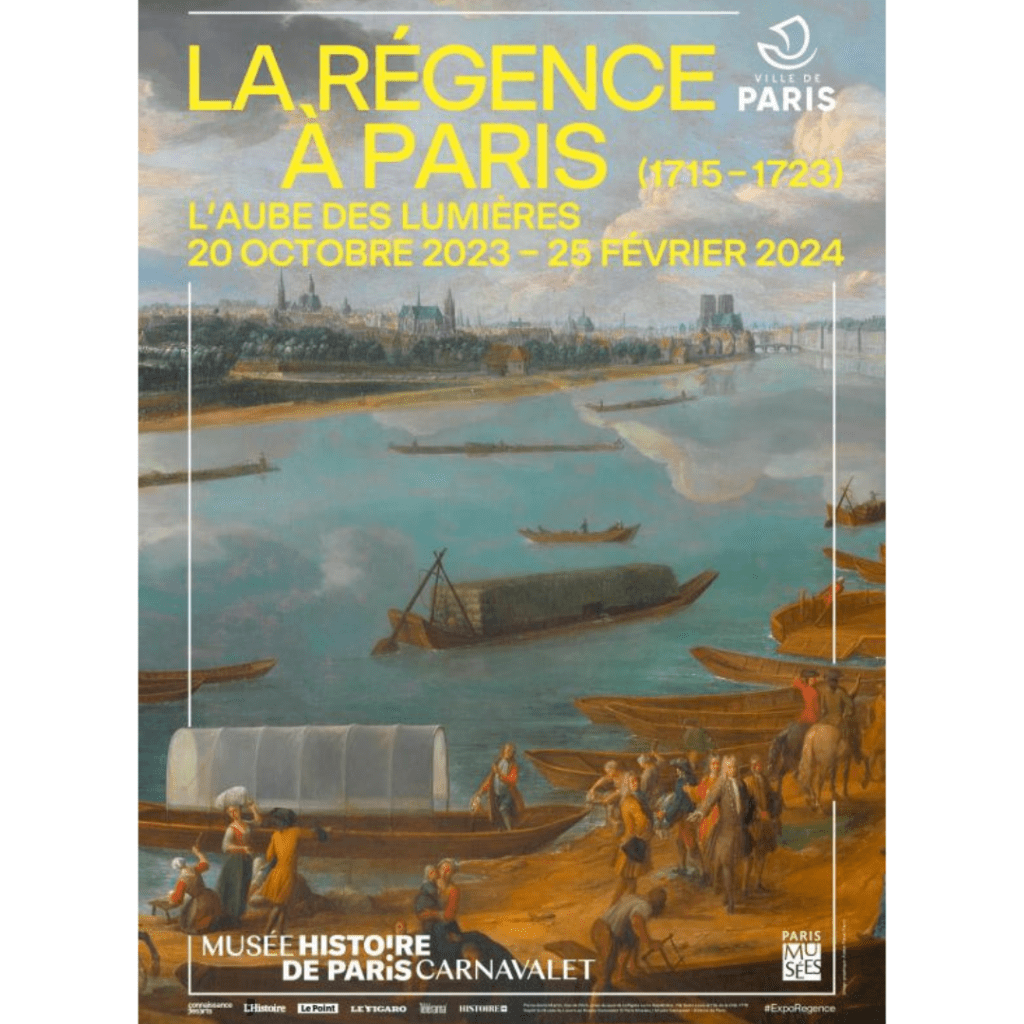
Upon the death of the Sun King, Louis XIV, Philippe brought the court from Versailles back to Paris, and this re-injection of power, prestige and glamour transformed a neglected capital into a place of artistic and intellectual excitement — the budding City of Light at what was the beginning of the Age of Enlightenment. For an insight into this inspirational moment in time, take the following tour …
The Palais-Royal
Built in the 1630s by Cardinal Richelieu — who wanted to live near the Louvre, which was at the time the royal seat of power — the Palais-Royal later became home to the House of Orléans, the cadet branch of the Royal Family.

While Philippe d’Orléans set up little Louis at the Palais des Tuileries (Catherine de Medici’s one-time palace, which was destroyed by fire in 1871), the true court was at his Palais-Royal, which Philippe duly had renovated in extravagantly regal style. A dedicated libertine, his wild supper parties here were the stuff of citywide gossip. At the time, the Paris Opéra was nestled within the Palais-Royal, and it too was the scene of much revelry, including masked balls that lasted until dawn.
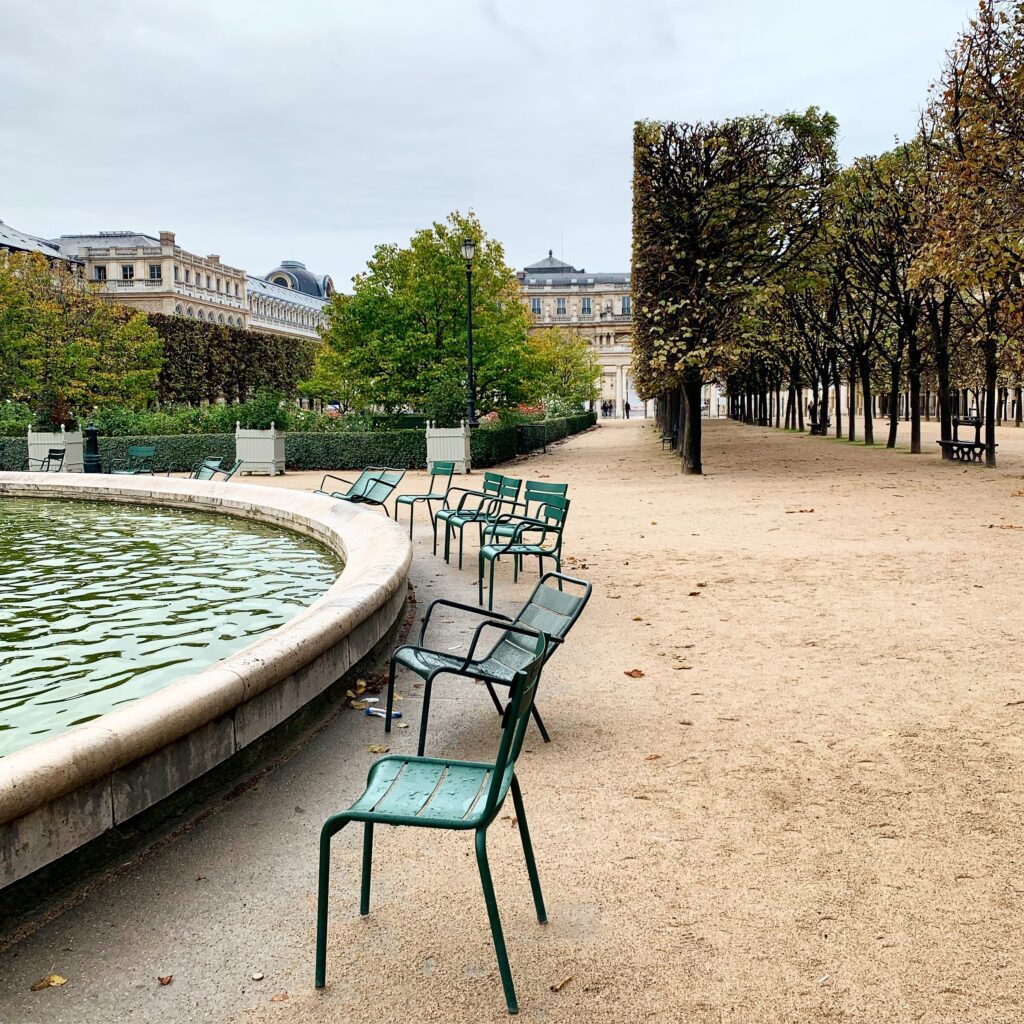
Sadly, Philippe’s Palais-Royal, and the old Paris Opéra, are no more, but the general plan of the old palace is still in place, including the lovely rear garden, where Philippe allowed the public to stroll, as we do to this day.
Le Procope
This legendary restaurant, which dishes up traditional French cuisine in a glittering antique setting, was originally, from 1686, a café — one of the city’s first coffeehouses. (To hark back to those origins, there’s a new Salon de Café on the ground floor, serving sweets, ice cream, and, of course, a wide selection of coffee.) Situated across from the old site of the Comédie-Française, Le Procope was in its early days a favourite haunt of theatregoers, thespians, and playwrights.
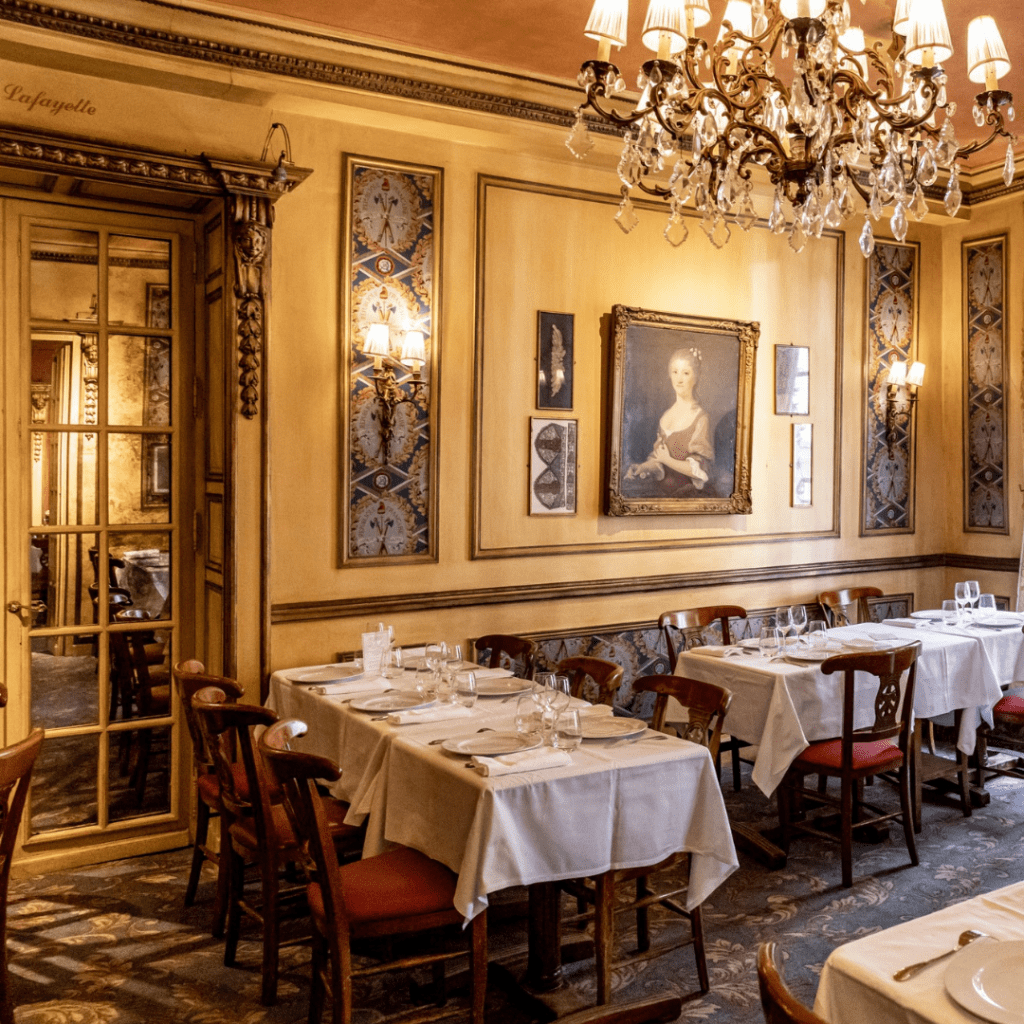
During the eighteenth century, Le Procope would become renowned for attracting the city’s wittiest and sharpest philosophical minds, including Voltaire. (And for helping to stimulate the Enlightenment and, in turn, foment the Revolution; it was here that the motto ‘Liberté, Égalité, Fraternité’ was coined). But during the Regency period, a young Voltaire was focused on becoming a dramatist; his first play, Œdipe, launched at the Comédie-Française to great acclaim in 1719. The witty Voltaire became a star of the city’s salons, and a kind of pet of the glitterati, who hosted him in their various country châteaux. Towards the end of the Regency, he secured his own apartment (in the building at 27 Quai Voltaire, 75007; above the restaurant named in his honour, Le Voltaire).
Tony Townhouses
With Paris once more the French power capital, the country’s movers and shakers returned to their city townhouses, or commissioned newer, fancier ones. It was the early era of Rococo, a whimsical and ornamental design style that reflected a lighter-hearted approach to living. While Rococo was at heart an interior style, it found external expression on façades in the form of lacy wrought-iron balconies and prettily sculpted detailing of fruit and flowers.
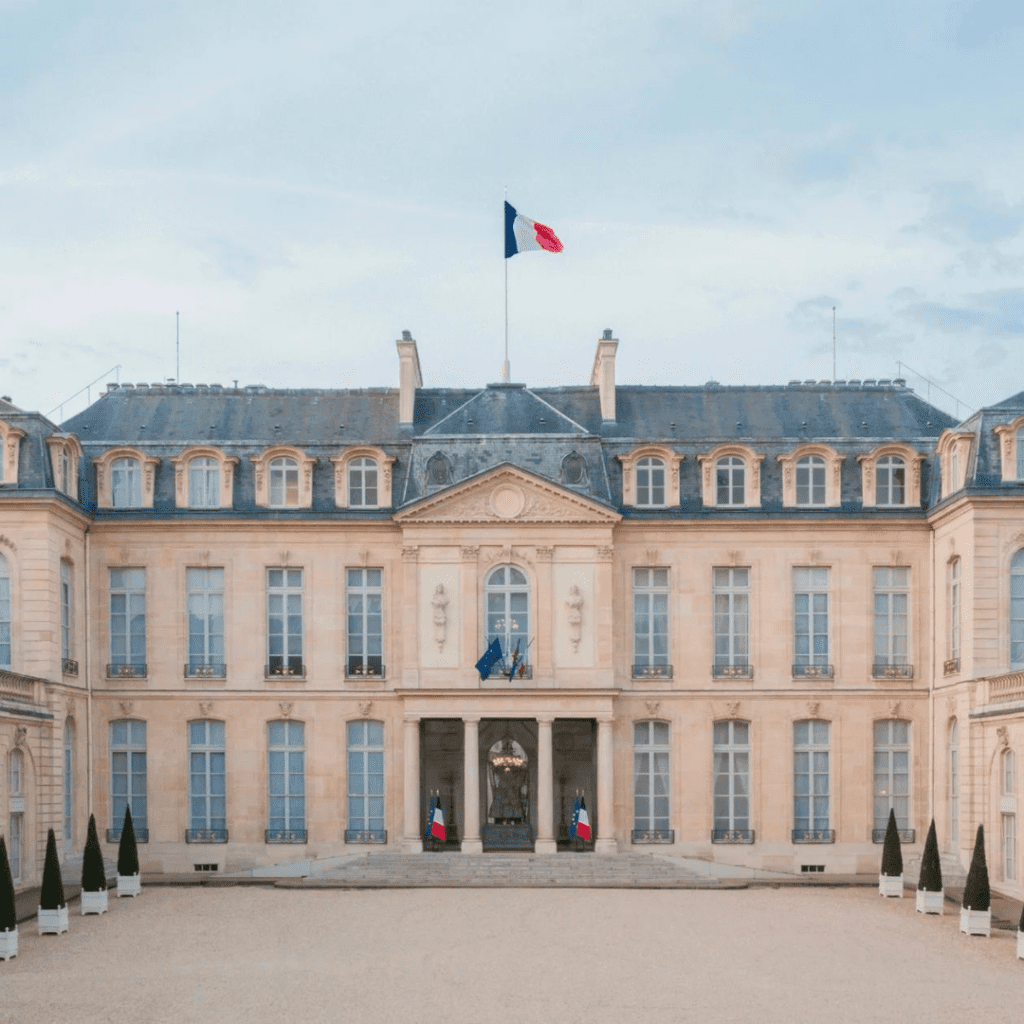
The grandest residential commission of the Regency was the Hôtel d’Evreux, which is now no less than the French president’s home, the Palais de l’Élysée (above). It was built in the then-expanding suburb of Faubourg Saint-Honoré.
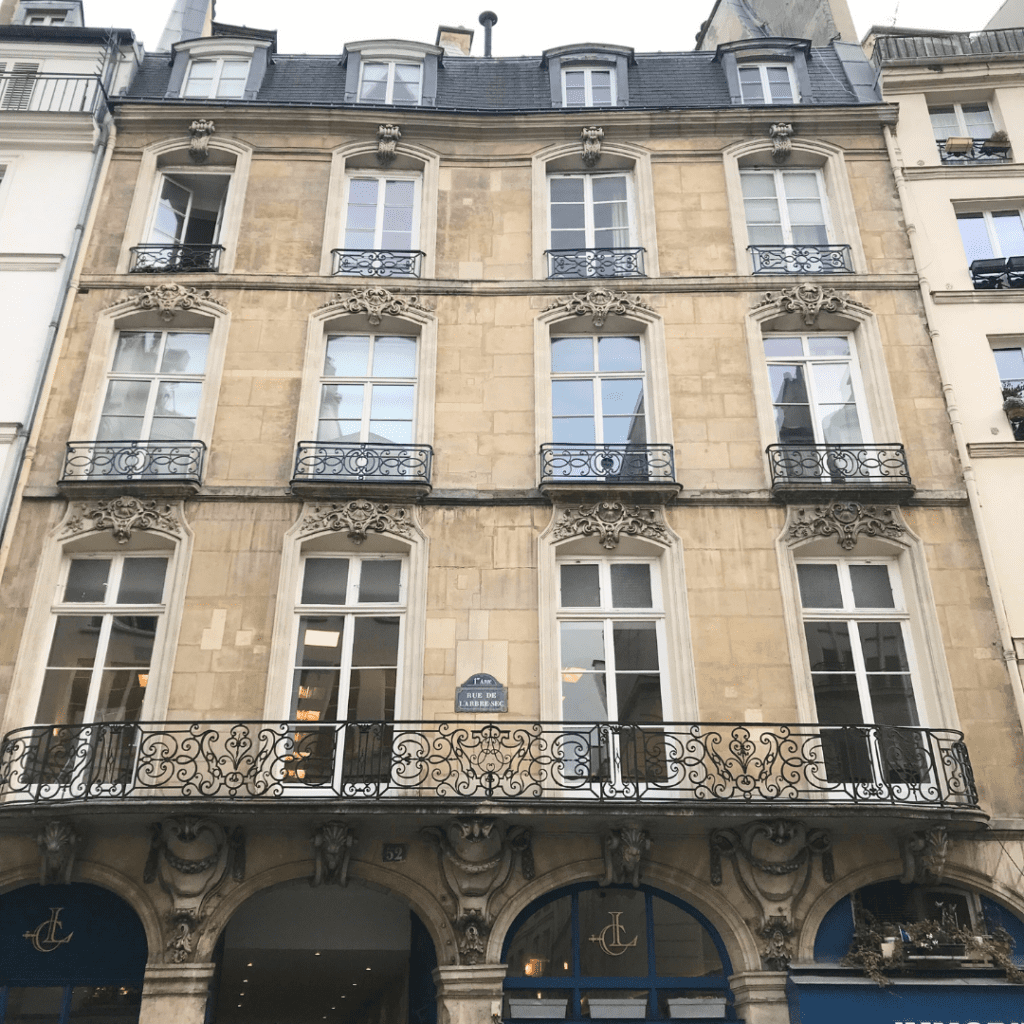
But many new houses jostled to be close to the Palais-Royal, neighbours to the powers-that-were. The Hôtel d’Eynaud, at 52 Rue de l’Arbre-Sec, 75001 (above), is a lovely example.

The glorious Hôtel de Chenizot, at 51 Rue Saint-Louis-en-Île, 75004 (above), is another case-in-point; the seventeenth-century townhouse was updated, around 1720, with a decorative balcony and façade, to suit the city’s playful new architectural mood.
La Galerie Dorée
One of the most in-demand architects during the Regency was Robert de Cotte. The jewel in his crown of work was arguably the redecoration of the glittering Galerie Dorée, which is now part of the Banque de France complex, and usually only open to the public during the annual Heritage Weekends.
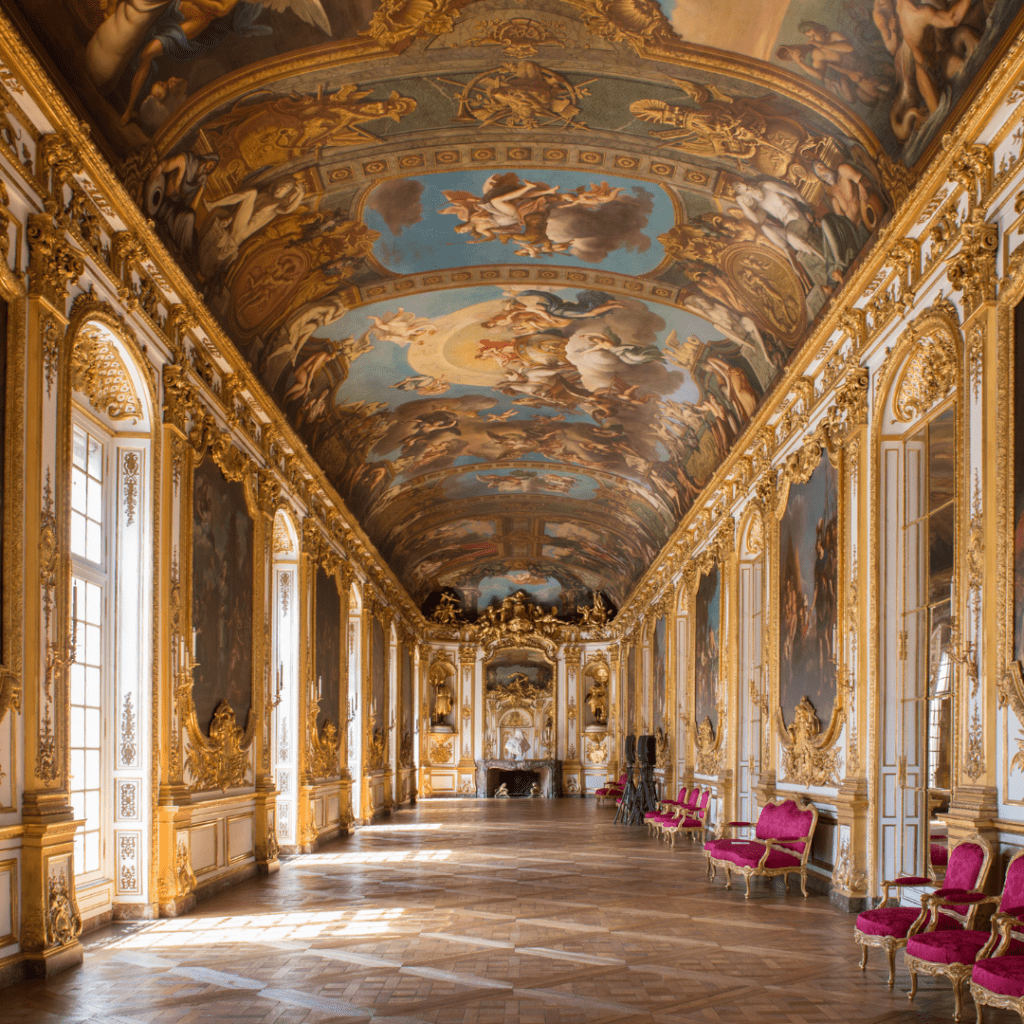
During the duration of the Carnavalet’s exhibition, however, visitors also have the chance to visit this early-Rococo gem. Click here for more information and to reserve a spot.
The Louvre
To see the spirit of Regency Paris captured in one single (and splendid) frame, head to the Louvre to swoon over Jean-Antoine Watteau’s The Embarkation for Cythera — a light and wispy depiction of an aristocratic day-out on a Greek island, where love and happiness seem suffused into the soft pastel shades.
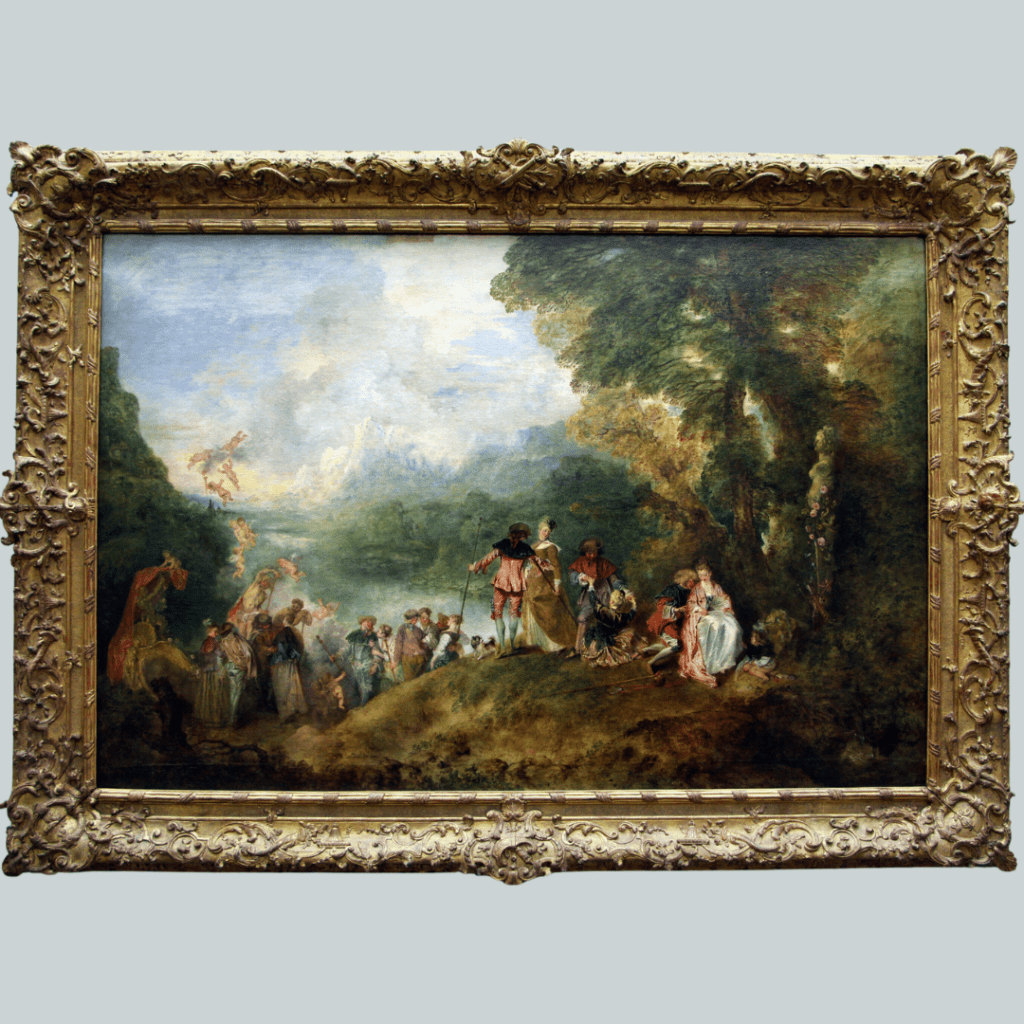
Presented in 1717, the painting inspired a new genre, which the Académie (then housed in the Louvre) named ‘fête galante.’ (There’s no ideal direct English translation, but the term denotes a garden party theme, with a little romance in the air.) Many art experts have commented that Watteau was able to perfectly capture a fleeting moment of bliss. Which was also, in a way, the essence of the Regency period: a time of hedonism so pleasurable that it was always bound to end, as all good parties do.
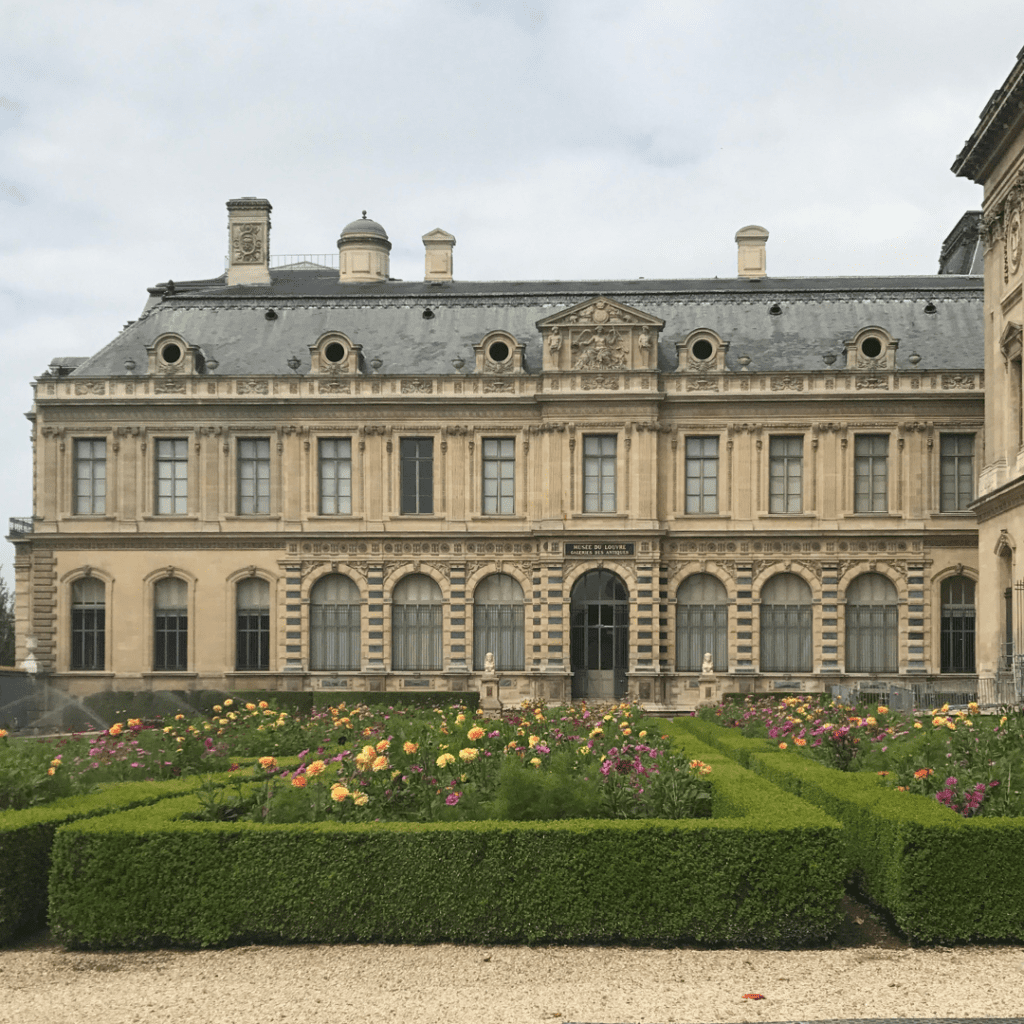
Leave the Louvre via the Cour Carrée, and walk towards the Pont des Arts. Before you cross over, stop and look to your right. The patch here (above) is the Jardin de l’Infante, named after little Louis XV’s first fiancé, a three-year-old Spanish infanta who came to live in the Louvre in 1722, in that very wing you can see behind the garden. She would only stay here a few months more, for Louis was about to come of age, and move back to Versailles, shunning Paris as his great-grandfather Louis XIV did before him. The young King left behind him a capital that was flickering into the City of Light. But amid all the talk of enlightenment, there was also discontent, which would find its ultimate outlet in revolution towards the end of the century. If only Louis had stayed in Paris, ensuring the Royal Family remained in touch with Parisians’ needs and concerns, history might well have turned out very differently …

